Medically Reviewed by: Dr. Veena Shinde (M.D, D.G.O, PG – Assisted Reproductive Technology (ART) from Warick, UK) Mumbai, India
-
Author: Palak Thakkar
- >> Post Created: February 15, 2021
- >> Last Updated: April 18, 2024
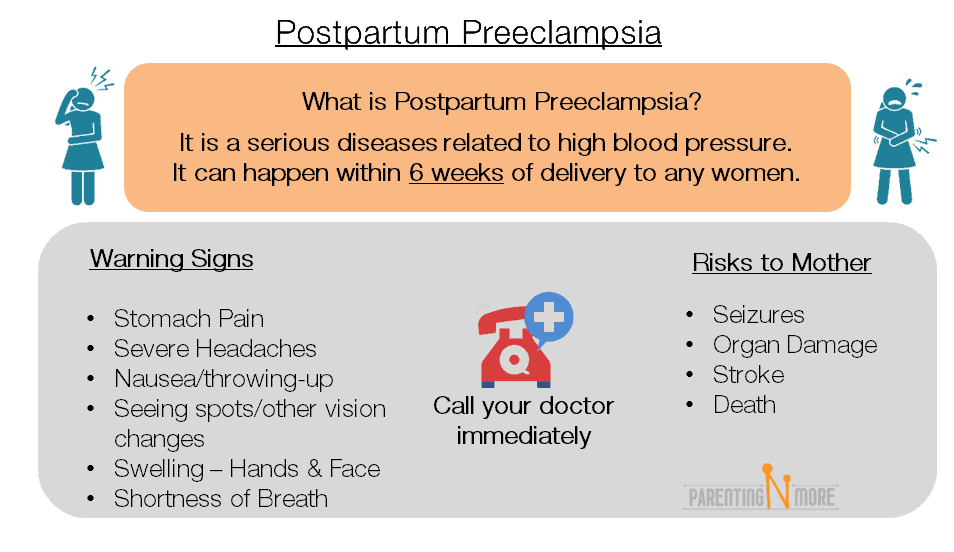
Table of Contents - Postpartum Preeclampsia
If you or your family has any history related to high blood pressure/ hypertensive, then during and post pregnancy you need to take special precautions and care under the guidance of your doctor to avoid conditions like Preeclampsia and Postpartum Preeclampsia.
You might wonder why is it important to know about these conditions? The simple answer is to avoid them completely as in case these conditions go untreated then they could lead to seizures, brain strokes, or even HELP syndrome.
Both the above conditions Preeclampsia and Postpartum Preeclampsia are rare health conditions.
The difference between Preeclampsia and Postpartum Preeclampsia is that the later develops post 6 week of pregnancy or sometimes even later.
Basically, Preeclampsia happens during pregnancy. It’s a condition where your blood pressure ranges around 140/90, you notice swelling, and higher levels of protein in your urine. However, these symptoms go away post pregnancy as your pressure steadies.
Postpartum preeclampsia happens around 6 weeks after childbirth, and it happens whether or not if you had high blood pressure before or during your pregnancy. Other symptoms you may experience along with high blood pressure are headaches, abdominal pains, nausea etc. If this condition is not treated right away then it can lead to a few serious complications.
Through this article we wish to help you understand the symptoms, risks, complications, and a few treatment options your doctor can suggest you.
What is Postpartum Preeclampsia?
As already mentioned earlier, Postpartum Preeclampsia is a rare condition that might develop soon after childbirth when one has high blood pressure and excessive protein in one’s urine. It is seen, that in most cases, it develops within 48 hours after child delivery. But in certain cases, preeclampsia after the birth of the baby can develop as late as six weeks or even later post the delivery.
It is a health condition which in no way should be neglected, because if left untreated, it can lead to stroke, brain damage, HELLP syndrome, and even death.
If you are pregnant, knowing about the condition beforehand can help you understand how to prevent Postpartum Preeclampsia. Once you are aware, you can help your doctor diagnose and treat the problem.
Symptoms of Postpartum Preeclampsia
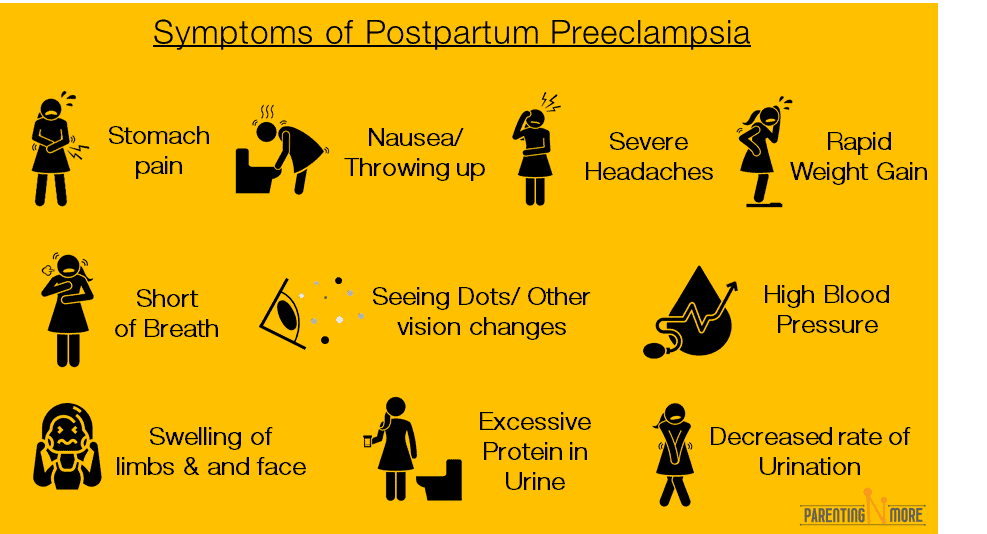
The symptoms of preeclampsia are often quite difficult to detect on your own. It has been observed that many women who suffer from Postpartum Preeclampsia often show no symptoms during their pregnancy. This condition may even go undetected because most women are focused on recovering from childbirth and caring for the newborn. But now that you are aware, you need to keep an eye out for the following symptoms:
- High Blood Pressure—140/90 millimeters of mercury (mm Hg) or even higher
- Excessive protein in the urine
- Severe headaches
- Changes in vision—blurred vision, light sensitivity, seeing spots, or even temporary vision loss
- Decreased rate of urination
- Pain in the upper abdomen, which is generally just under the ribs on the right side
- Throwing up and feeling nauseous
- Shortness of breath
- Swelling of the face, hands, feet, or limbs
- Rapid weight gain
If you find you are suffering from the above-mentioned symptoms, it can be an indication that you are suffering from preeclampsia after birth, and depending on the circumstances you might need immediate medical care.
Read this next
Causes of Preeclampsia after the birth
The exact causes of Postpartum Preeclampsia are not very clear. However, certain factors increase the risks of the same. The major factors that can lead to preeclampsia after birth are as follows:
- Presence of uncontrolled high blood pressure before being pregnant
- A family history of Postpartum Preeclampsia
- High blood pressure during your most recent pregnancy – gestational hypertension
- Obesity is another common cause for postpartum preeclampsia
- Suffering from type 1 and 2 diabetes
- Being pregnant with twins, triplets, or more babies can increase the risk of you getting affected with Postpartum Preeclampsia.
- Being pregnant when you are less than 20 years old or over 40 years old
If you have any of the above-mentioned conditions, you should be more careful. By doing so, you can try and prevent Postpartum Preeclampsia to a certain extent.
How common is Postpartum Preeclampsia?
One important point that you need to remember is that Postpartum Preeclampsia is not very common. Some studies reveal that it affects approximately 600 women a year, whereas others show that around 4–6% women get diagnosed with this condition.
However, it is quite difficult to quantify the exact data. One reason why it is difficult to know is that some women who suffer from Preeclampsia already had the problem beforehand. On the other hand, others develop it as the name goes— ‘postpartum.’
As the condition is not very common, many women ignore the health symptoms that develop due to postpartum preeclampsia. But the negligence can ultimately be quite scary. If the problems are ignored, it can lead to life-threatening conditions. Because it is not common, you need to be extra cautious and keep a close eye on the symptoms that you might be suffering from.
It thereby helps you in not only diagnosing the disease early on but also preventing the disease all together.
What are the factors that lead to postpartum preeclampsia?
If you are wondering how to prevent preeclampsia you need to be aware of the factors that can lead to postpartum preeclampsia. The following are the main risk factors you need to keep a close eye on:
- Obesity—In case you are obese, then there is a higher possibility of you getting affected by postpartum preeclampsia
- High Blood Pressure—If you suffer from hypertension, then your chances of suffering from postpartum preeclampsia increases.
- Family history of postpartum preeclampsia—If you have other members in the family who have suffered from this disease, then it can increase your chances of suffering from postpartum preeclampsia.
- Women who are less than 20 years old when they get pregnant—Age too can be one of the risk factors for the disease. Young mothers (under the age of 20 years) are more likely to be prone to the disease.
- Women who are more than 40 years old when they get pregnant—Mothers who are over 40 years old are at a higher risk of being affected with postpartum preeclampsia. So if you belong to this age group, you need to be extra careful.
- Having twins or multiple babies—If you have given birth to twins or multiple babies, then you need to be more cautious about preeclampsia after birth.
- If the mother has type 1 or type 2 diabetes, then they are more likely to fall prey to the disease. So in case you are diabetic you need to be extra careful.
How is postpartum preeclampsia treated?
Once your health provider has diagnosed that you are suffering from preeclampsia after birth, it needs to be treated on an urgent basis. The following are the treatments that are usually prescribed to manage postpartum preeclampsia:
Medications to lower high blood pressure
As already mentioned earlier, one of the health conditions that patients suffer from as a result of postpartum preeclampsia is high blood pressure. If this is not treated, and controlled it can have many serious health problems. Therefore, care needs to be taken to get hypertension under control immediately. For controlling high blood pressure, your health care provider might prescribe certain medications. These are usually anti-hypertension medications for treating the problem immediately so that it does not get worse and cause further health complications.
Medications to prevent seizures
Another health problem that you might get affected with as a result of postpartum preeclampsia is seizures. These again need to be treated urgently so that the problem gets arrested with immediate effect. Magnesium sulfate helps to prevent seizures in women, who have severe symptoms and signs of seizures owing to the disorder. Magnesium Sulfate is typically taken for 24 hours after which your health care provider will closely monitor your blood pressure levels. Along with that they will also check the protein levels in the urine and other common symptoms of postpartum preeclampsia.
Anti-Coagulant medications
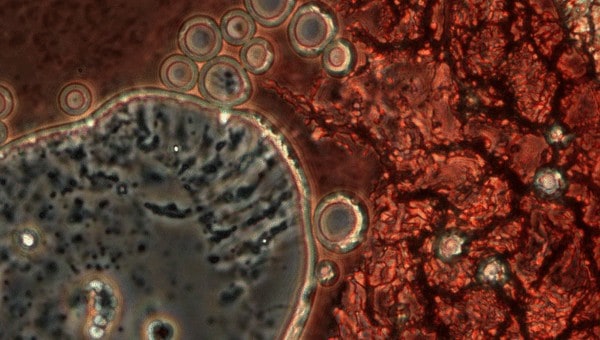
Blood under Coagulation process
Anti-coagulant medications
Another common medication that is used for treating preeclampsia after birth is anti-coagulant medicines that will to a large extent reduce the risks of blood clots that ultimately lead to serious health conditions.
When it comes to treating postpartum preeclampsia, you must make it a point to inform your health care provider whether you are breastfeeding or not. Because they need to determine whether the medications being used for your treatment will be safe for your infant or not.
What are the complications that can arise due to preeclampsia after birth?
In case you have just given birth, you need to be aware of the symptoms of preeclampsia after birth. If neglected, it can lead to some very serious life-threatening conditions. The complications can be so severe that they can permanently damage vital organs. The complications resulting from the condition are as follows:
Postpartum eclampsia.
Postpartum eclampsia is essentially postpartum preeclampsia plus seizures. Postpartum eclampsia can permanently damage vital organs, including your brain, eyes, liver, and kidneys.
Pulmonary edema
If postpartum preeclampsia is not timely detected and treated, it can also lead to another very severe health condition—pulmonary edema that affects the lungs. It occurs when excessive fluids get accumulated in the lungs. Pulmonary edema can be fatal. So steps need to be taken before such severe complications arise.
Brain stroke
Another complication of this disease is stroke. It happens when the blood supply to a part of the brain is interrupted or has been severely reduced. As a result, the brain tissue does not get enough oxygen and nutrition. This can lead to permanent paralysis of the limbs. It can also be fatal in severe cases.
Thromboembolism
Another common complication that can arise if postpartum preeclampsia is neglected is scientifically known as thromboembolism. In simple terms, it is a condition that leads to the blockage of a blood vessel by a blood clot that travels from another part of the body. This is a serious health condition and needs to be addressed immediately.
HELLP syndrome
Preeclampsia after birth if not treated timely can develop into HELLP syndrome. The full form is hemolysis, elevated liver enzymes, and low platelet count. It damages the liver and can ultimately lead to a life-threatening situation. Hemolysis destroys red blood cells, which can also lead to other complications.
All the above complications can develop as a result of neglecting preeclampsia after birth. Proper and timely diagnosis of the problem can play a key role in preventing other health problems that can arise due to postpartum preeclampsia. So let us look at ways to diagnose the problem.
Diagnosis of postpartum preeclampsia
Although postpartum preeclampsia is not very common, early diagnosis can help prevent many of the resulting health complications. The good news is that in most cases symptoms show up early. In many cases the symptoms can be seen when the patient is in the hospital. But in case the symptoms develop after you have been discharged, you may have to return for a proper diagnosis and treatment.
For diagnosing postpartum preeclampsia, your doctor may do the following:
Blood pressure monitoring
As already mentioned, one very common symptom of preeclampsia after birth is that the blood pressure may shoot up and stay high. Thus blood pressure monitoring is one of the key methods of diagnosing the problem. It is also what most resort to for effective diagnosing.

Blood tests and liver & kidney function test
Postpartum preeclampsia adversely affects the platelet count in the blood. Checking the platelet count in the blood is often used to detect the problem. Along with the platelet count, liver and kidney function tests also reveal the presence of the problem.
These tests can help determine whether the liver and kidneys are functioning properly and also the platelet count in the blood. Any abnormality in the result can be due the patient suffering from postpartum preeclampsia.
Urine analysis
Another way to diagnose the problem is through urine analysis. Postpartum preeclampsia causes the protein levels in the urine to rise. So doctors can check the protein levels in the urine through a urine analysis to determine if the patient is suffering from postpartum preeclampsia.
How to prevent preeclampsia after birth?
By now you know that postpartum preeclampsia can be a serious health condition, often leading to even life-threatening situations if not diagnosed and treated timely. Therefore, it is essential to know how to prevent preeclampsia. Unfortunately, the exact cause of preeclampsia is still not known.
However, it is believed that improper functioning of the placenta can be a possible reason leading to the health condition. Other factors that can contribute to the condition include obesity or poor nutrition. Immune system disorders, genetic issues, or family history can also be the possible reasons.
Because the exact reasons for postpartum preeclampsia are not known, there is no sure way you can exactly know how to prevent preeclampsia. However, to prevent the disease some factors that cause high blood pressure can be controlled. So try and keep your blood pressure under control. Some indirect ways to prevent the disease are as follows:
- Have your blood pressure checked frequently, after you have the baby
- Keep your salt consumption as low as possible—as excess consumption of salt enhances the blood pressure levels
- Avoid the consumption of fried and junk food that increase blood pressure levels
- Exercising regularly too goes a long way to keep the blood pressure under control. So try and exercise regularly.
- Eating a healthy and well-balanced diet is one of the ways that experts recommend when they are asked how to prevent preeclampsia
- Your doctors can prescribe certain medicines to keep your blood pressure levels under control.
- Try and lead a more active lifestyle to stay healthy always
- Consider taking baby aspirin during your next pregnancy. If you get pregnant again, your doctor may want you to take baby aspirin to help prevent preeclampsia from occurring again.
The exact causes of postpartum preeclampsia are still not known; therefore, there is no one way to determine how to prevent preeclampsia. Therefore, it is important that you be more alert about the symptoms. Early detection of the problem and treating it early goes a long way to prevent any serious complications that may arise due to postpartum preeclampsia.
What’s the recovery like?
To help ease the symptoms, your doctor will try to find the right medication that can get your blood pressure under control. This can take anywhere from a few days to several weeks.
You will be recovering not just from postpartum preeclampsia, but also from childbirth itself. This includes the physical and emotional changes such as:
- fatigue
- vaginal discharge or cramping
- constipation
- tender breasts
- sore nipples if you’re breastfeeding
- feeling blue or weepy, or mood swings
- problems with sleep and appetite
- abdominal pain or discomfort if you’ve had a cesarean delivery
- discomfort due to hemorrhoids or episiotomy
To overcome many of the issues, you might have to stay in the hospital a little longer than anticipated or get more bed rest than usual. Taking care of yourself and your newborn can be a challenge at this time. Try to do the following:
- Ask for help from your loved ones until you have fully recovered. Ensure you stress on the seriousness of your health condition and your need for rest. Let them know when you feel overwhelmed and be specific about the type of assistance you need.
- Keep all your follow-up appointments. It’s important for you and your baby.
- Ask about the signs and symptoms that signal an emergency.
- If you can, hire a babysitter so you can catch up on rest.
- Don’t return to work until your doctor says it’s safe to do so.
- Make your recovery a top priority. This means letting go of unimportant tasks so you can concentrate on regaining your strength.
Your doctor will talk to you about what’s safe to do and how to best care for yourself.
Ask questions and follow these recommendations carefully. Report any new or worsening symptoms to your doctor right away.
Make sure you inform your doctor if you feel regularly overwhelmed or have any symptoms related to anxiety or depression.
Key takeaways
Hope you have gathered from this article that preeclampsia after birth is a serious health condition that can even be fatal. The worst part is that there are hardly any prior indications; hence, there is very little you can do to prevent postpartum preeclampsia.
What is also really worrying is that the condition, if neglected, can become very critical in a short span. Once you are aware, you need to keep a close watch on the symptoms. If you find that the symptoms are persisting or worsening, you need to consult and seek medical help right away.
To cope with this uncommon but very serious problem, you need support. Availing the right support and medical aid is what can truly help you through this medical crisis if it suddenly arises. It is the best thing that you can do as a mother not only for yourself but also for your baby. We wish you a happy and healthy motherhood.
`
Happy Motherhood!

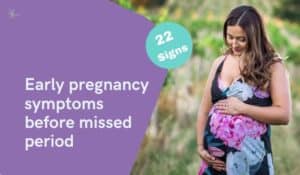

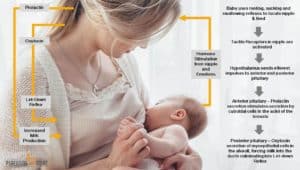









Thanks Lorreta for sweet words.
You are a brave women.